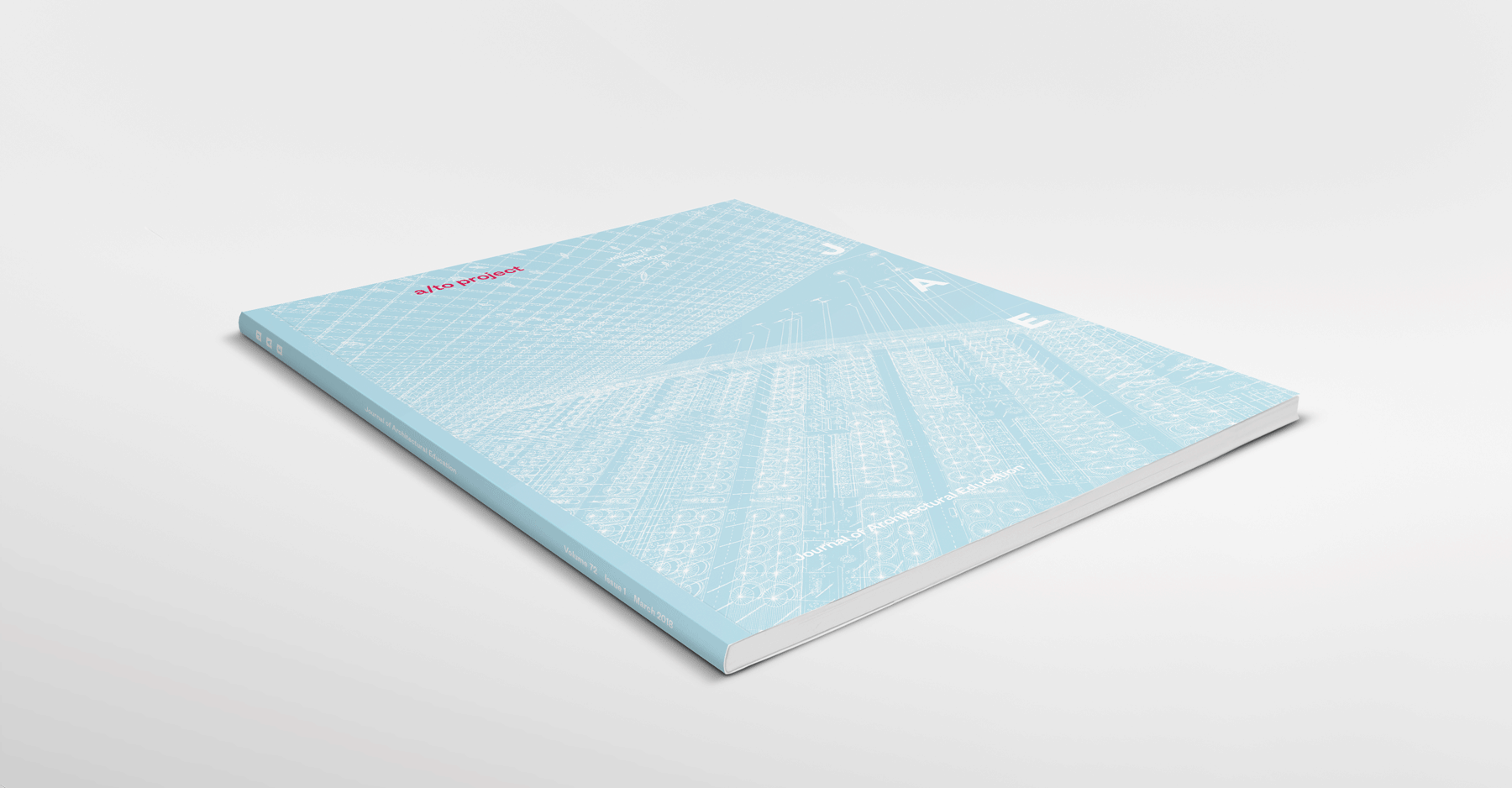
This issue marks the end of my first term as Executive Editor of the Journal of Architectural Education. Over the past four volume years we have published eight issues, completed a redesign of the physical journal, and launched a new website. Given the three-year tenure for board members, membership on the Editorial Board has completely turned over. In this issue devoted to a “project,” it seems like a good moment to reflect on the project that is the Journal of Architectural Education.
The JAE was first published in 1947. It developed out of a pre-War bulletin printed by Walter Rolfe called The Evolving Architect. In 1946 Turpin Bannister, who was also influential in the formation of the Journal of the Society of Architectural Historians, was tapped to revive the effort and named the ACSA publication, the Journal of Architectural Education. The first issue included news items, the results of a survey on research, and scholarship on research in architecture. Through the first decade of the journal, and through a rotating cast of editors, the contents mostly consisted of proceedings from ACSA Annual meetings. Similar to the participants of the ACSA Annual meetings, the authors of the journal were not particularly diverse. It took almost a full decade for a female author, Catherine Bauer, to be published. Into the 1960s the content evolved but still included ACSA reports and records from AIA-ACSA Teacher’s Seminars. Issues were typically not more than sixteen pages and images were limited to black and white photographs of people speaking at conferences.
By the 1970s, the journal grew in page count with issues averaging around thirty pages. Book reviews were included in addition to the scholarly essays. At the beginning of the decade, the Teacher’s Conference provided the majority of content. In 1974, Arthur E. Hacker became the editor of the journal and quickly proceeded to make a complete graphic redesign. He increased page count and introduced letters to the editor. Theme issues such as Canada, Landscape, Preservation, Energy, Aging, the Profession, Drawing, Symbolism, and Gaming were mixed with open issues made up of content submitted to no particular theme. At the end of the 1970s Roger Schluntz helped to establish the JAE endowment fund and in 1982 the Editorial Board was formed by Peter Papadimetriou, then Executive Editor. Papadimetriou’s term began with another complete redesign of the journal. Interviews were introduced—most notable, perhaps, was an interview with Albert Speer.
In 1986 David Bell introduced the OpArch—opinion pieces that were not peer-reviewed—and proposed to include design content. The first of such essays (a car wash) was published in 1989 under the editorship of Diane Ghirardo who presented a call for design submissions in her first issue (42:1) as Executive Editor. Ghirardo also introduced essays of architectural criticism and conference reviews. By the late 1980s the journal had doubled in size and in 1990 the journal was, again, completely redesigned. Under Ghirardo’s eleven-year tenure, the JAE celebrated its 50th anniversary (with two covers in color!), Peggy Deamer was appointed as inaugural Design Editor, and the journal evolved to be much more inclusive in its authorship and diverse in its themes. Barbara Allen followed and, in 2002, introduced a new layout that would more easily accommodate design work. Lily Chi, then Design Editor, proposed a series of frameworks for design content such as “design as research” and “design as critical inquiry.” As a result, the design content increased in page count and improved in quality. Although limited, project images were printed in color and the journal made its first foray into the world wide web. 2007 marked the 60th anniversary of the JAE and the 150th anniversary of the American Institute of Architects. George Dodds was named as the Executive Editor and began his term with an image-less cover, intended to mark the change in editorship. Under Dodds’ leadership the current scholarship categories—Design as Scholarship and Scholarship of Design—were established and the journal shifted from four issues per volume year to two. More recently, Amy Kulper and the Design Committee developed new frameworks for curated design content as well as micronarratives. Ivan Rupnik has led the expansion of reviews, which are now completely online at JAEOnline.org.
The design of the journal, content categories, the organizational structure of the journal’s leadership, funding models, digital presence, scale of publication, editors, authors, readers, staff, and the publishing context have all radically changed since 1947. It is truly an evolving project. That said, the mission of the JAE has not changed. The Journal of Architectural Education has been published since 1947 for the purpose of enhancing architectural design education, theory, and practice.
Continue Reading:





